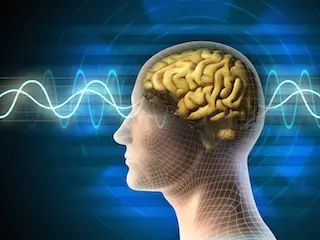The human brain has an enormous capacity for work. Ironically, it is currently impossible for humans to understand the extent of this capacity due to medical science’s limited understanding of how the brain operates. However, neuroscientists and neurosurgeons such as those at Texas Back Institute who work with brain-related conditions know that it is the command center for the human nervous system. It receives input from the sensory organs and sends output to the muscles. And, interestingly, it can re-wire itself when damaged. This capacity is called neuroplasticity.
Several medical dictionaries, including MediciNet define neuroplasticity as “the brain’s ability to reorganize itself by forming new neural connections throughout life. Neuroplasticity allows the neurons (nerve cells) in the brain to compensate for injury and disease and to adjust their activities in response to new situations or to changes in their environment.
“Brain reorganization takes place by mechanisms such as ‘axonal sprouting’, in which undamaged axons (nerve fibers) grow new nerve endings to reconnect neurons whose links were injured or severed. Undamaged axons can also sprout nerve endings and connect with other undamaged nerve cells, forming new neural pathways to accomplish a needed function.”
In some cases, neuroscientists have found cases where one disorder of the brain is tied to another. For example, researchers at the China Medical University in Taiwan analyzed medical records stored in a national registry to determine how many people initially diagnosed with schizophrenia later developed epilepsy, and vice versa. The results suggest that people who develop one of these disorders are at heightened risk for the other. People with schizophrenia were nearly six times as likely to develop epilepsy compared with other people, while individuals with epilepsy were nearly eight times as likely to develop schizophrenia compared with other people.
Because of its potential for enhancing treatment for conditions, such as epilepsy, autism, schizophrenia, stroke and Alzheimer’s disease, neuroplasticity must be taken into account for surgery on the brain. For Texas Back Institute neurosurgeon Akwasi Boah, neuroplasticity might very well be transformative for this branch of medicine.
The Capacity of the Brain to Fix Itself
While much has been written, both in the medical and general interest scientific literature about neuroplasticity, as a neurosurgeon, Dr. Boah has an interesting take on the capacity of the brain to “fix” that which is broken.
“I believe neuroplasticity is a universe unto its own,” he said. “For me, this is what makes the anatomy of the neurologic system and the function of the central nervous system so cool.
“Clearly, there is so much more that we need to know about this process, and, whether neuroplasticity is on the tip of a neurosurgeon’s tongue or not, it is something we are always thinking about. In basic neuroanatomy, you soon realize that a lot of the crossing fibers and the brain itself are redundant. How much? We don’t know yet. We do know that the information of the brain is stored in areas where it is protected.”
The Brain is Still a Mystery
“Some fascinating research has been completed over the past few decades that suggests that the most important functions we have, such as speech, is really not ‘mapped out’ where we think it is in the brain,” Dr Boah said. “While these functions are associated with specific locations of the brain, human beings are not textbooks that can be neatly organized.
“For example, when speech was mapped out among many individuals, it was found in many different places of the brain, not where we originally thought it was. This is true for many other functions in the brain. For a patient who has lost his or her ability to speak due to a stroke, for example, understanding this situation is critical to treatment and rehabilitation.”
Treating Disorders of the Brain by Using its Malleability
In his practice at Texas Back Institute, Dr. Boah has treated many patients who suffer from epileptic seizures and he has incorporated vagus nerve stimulation as a treatment for the condition instead of drugs or major surgery. He sees the malleability of the brain and re-connectivity of its neurons as a critical factor for treating several less understood conditions, including autism, stroke, schizophrenia and epilepsy.
“Understanding neuroplasticity is critical to neurosurgery,” Dr. Boah said. “If we are able to learn just a little more about how the brain and spinal cord are able to regenerate – neurons in particular – it will have a profound impact on the treatment of injuries and diseases of the brain and central nervous system. We are probably 15 to 20 years away from this understanding, but when that time comes, neuroplasticity will become the standard of care for both orthopedic and neurosurgery. We’re getting there!
“We are learning a lot about the effects of this process by treating the central nervous systems of young children and adolescents,” he said. “They have the greatest capacity for benefiting from neuroplasticity because their brains are growing and re-wiring constantly.
“As for employing neuroplasticity in rehabilitation of brain injuries or disease, this is a fundamental concept. The expression ‘use it or lose it’ is very important to rehab. When a post-operative patient regains function of the brain by implementing repetitive activities and stimulation, this is the amazing power of neuroplasticity at work.”
For more information on the treatment of disorders of the brain, contact us at Texas Back Institute for an appointment.


